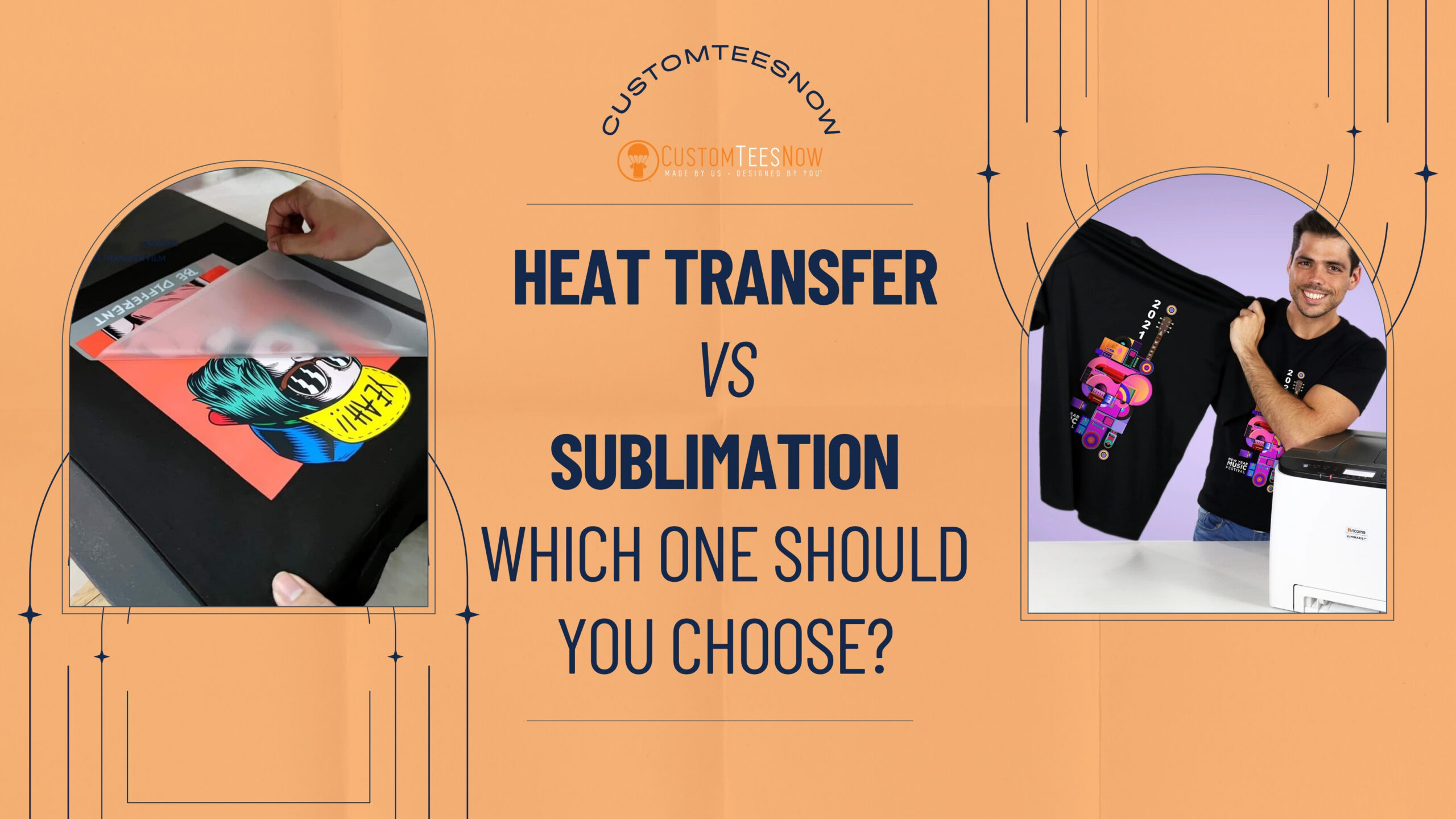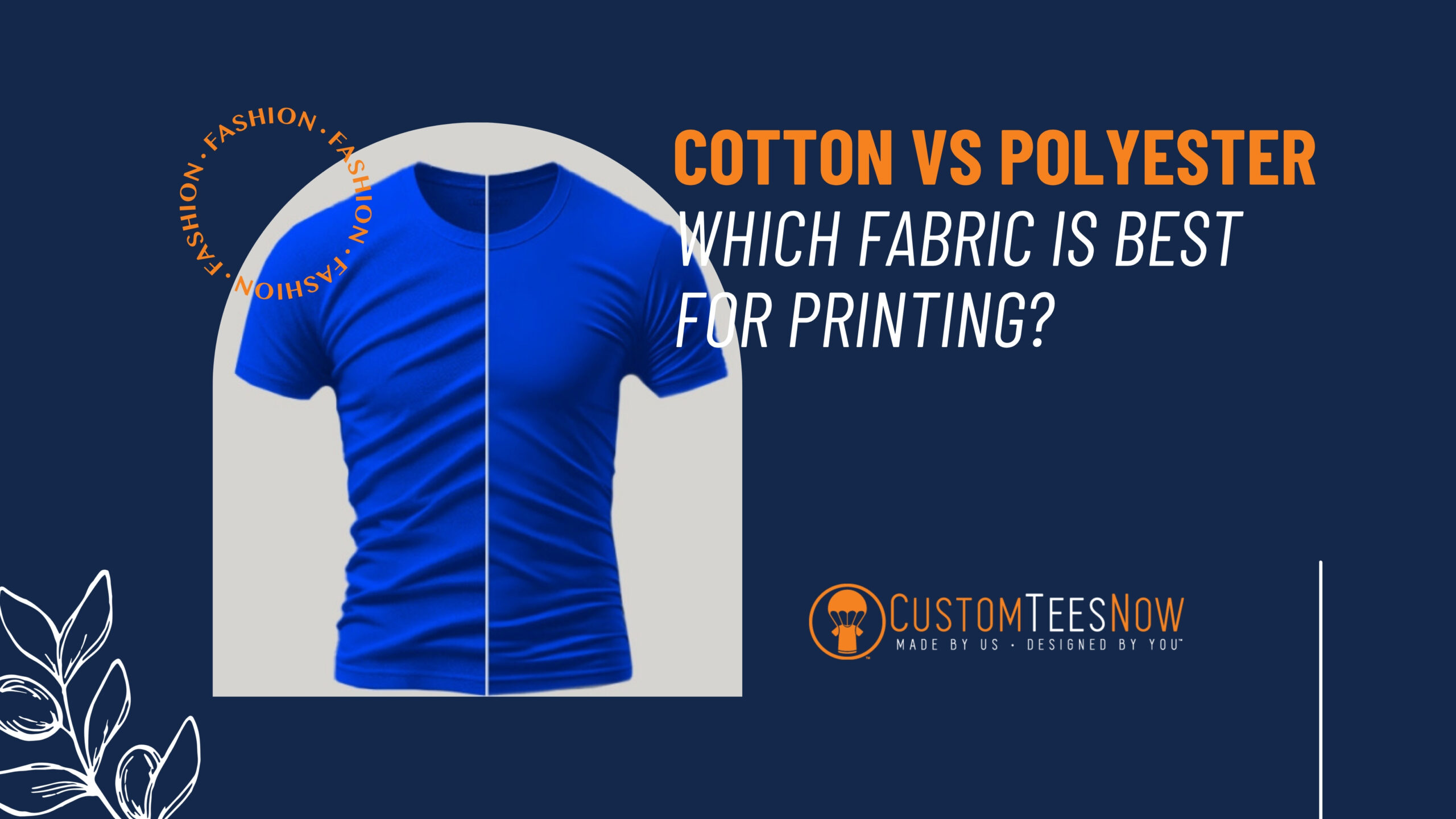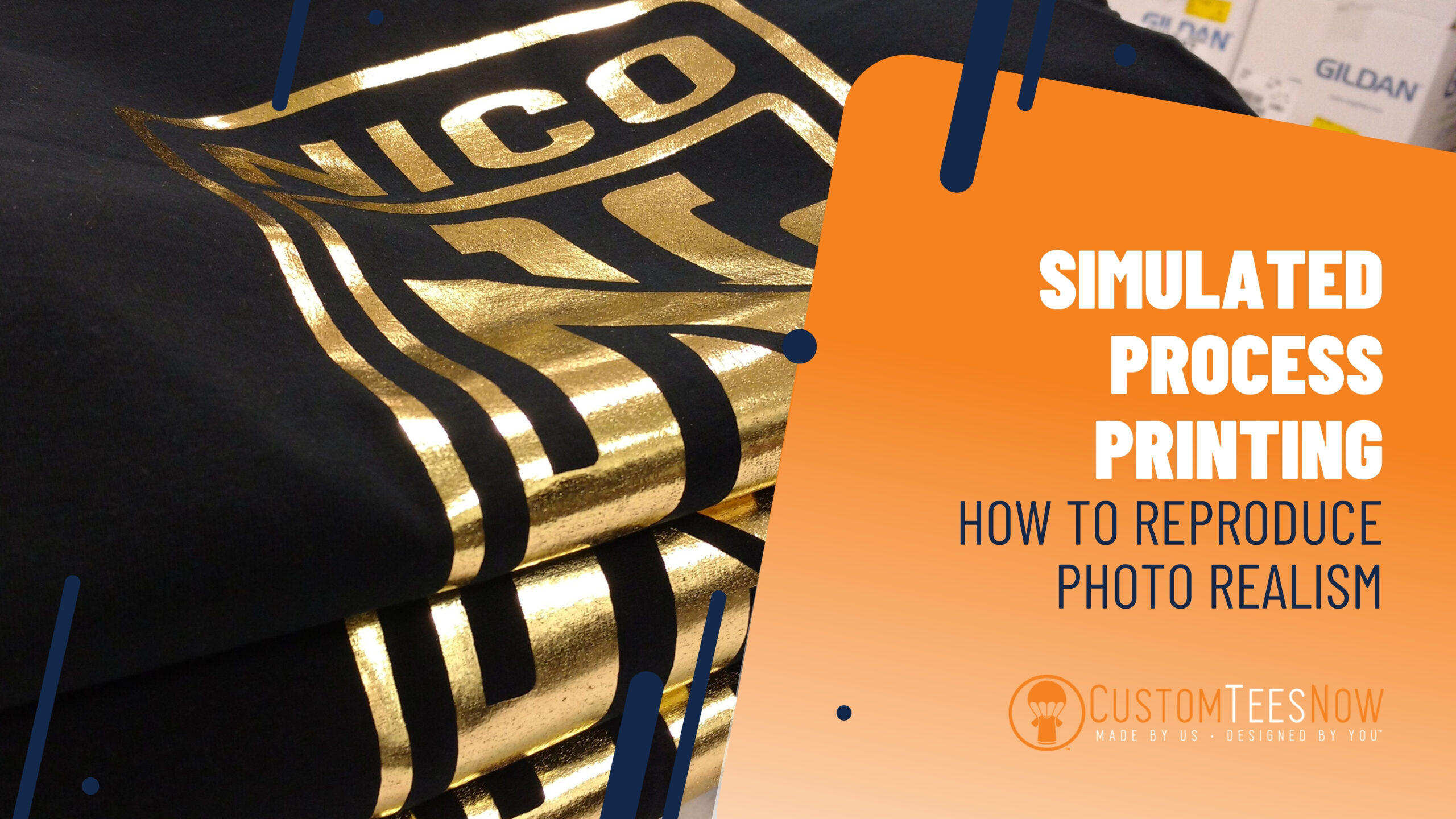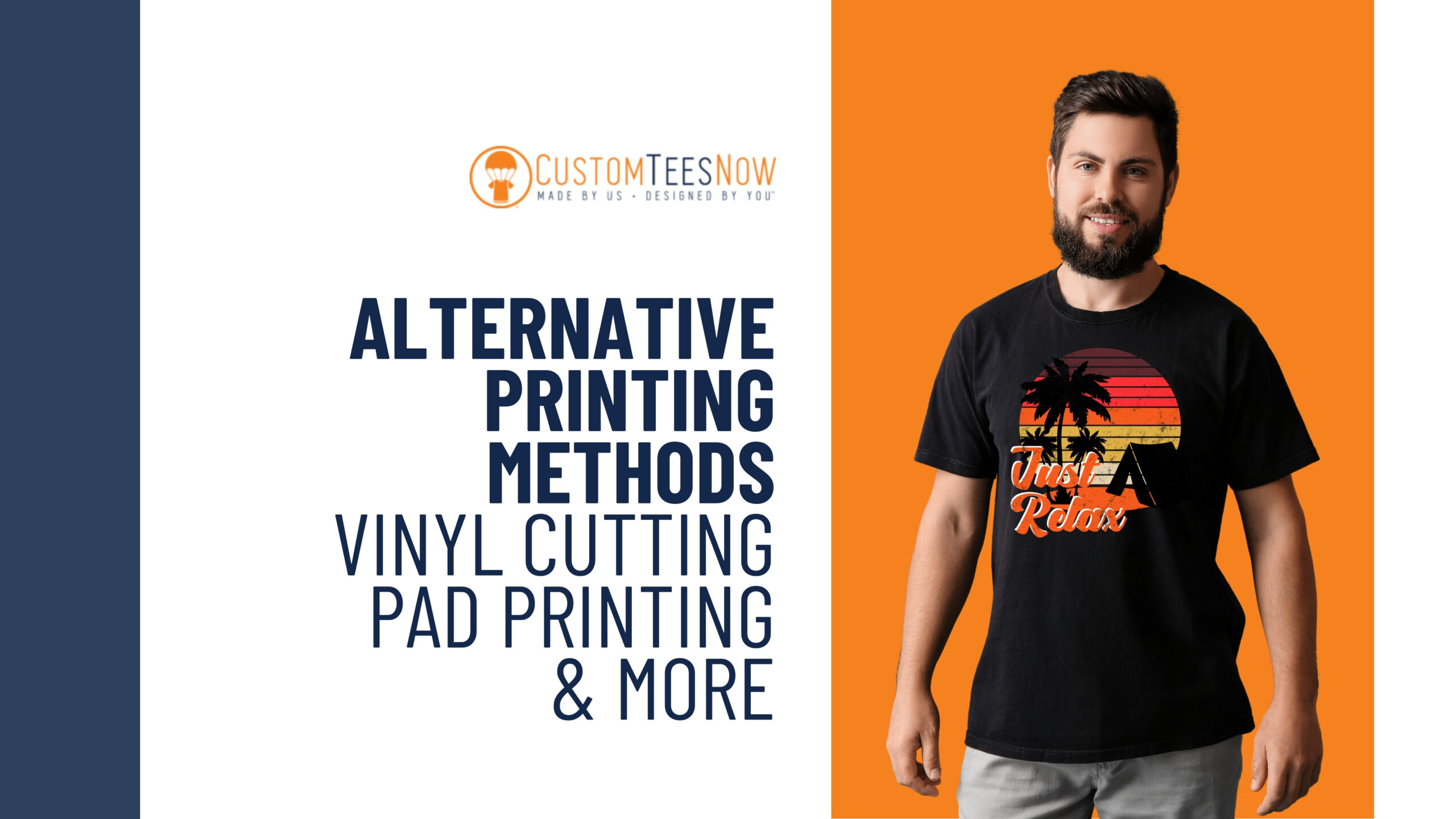
- October 9, 2025
Heat Transfer vs Sublimation: Which One Should You Choose?
Custom apparel is a powerful way to express creativity, promote your brand, or unite a group for a special event. At Custom Tees Now, we understand that choosing the right printing method can feel daunting, especially with so many options available. Two standout techniques—heat transfer and sublimation—offer vibrant, high-quality results, but they cater to different needs. Whether you’re designing custom t-shirts for a Naples family reunion or branded hoodies for your business, this guide will help you decide which method is best for your project.
In this guide, we explore how heat transfer and sublimation work, their pros and cons, and when each shines. With a clear comparison and expert insights from our Naples, FL-based team, you’ll be equipped to make the right choice. Plus, with our online design tool and free shipping on every order, Custom Tees Now makes it easy to bring your vision to life. Let’s get started!
Understanding Heat Transfer Printing
Heat transfer printing, also known as heat press or vinyl transfer, uses heat and pressure to apply designs to fabric. The process involves creating a design, transferring it onto a special material (like vinyl or transfer paper), and using a heat press to bond it to the garment. It’s a versatile method that works on everything from t-shirts to tote bags, making it a favorite for quick, high-quality customizations.
How Heat Transfer Works
The process is simple yet precise. You start by creating or uploading a design—our online design tool makes this a breeze. The design is then cut into vinyl for solid colors or printed onto transfer paper for full-color images. A heat press applies temperatures of 300–400°F for 10–30 seconds, embedding the design into the fabric. Once the backing is peeled away, your custom piece is ready.
Heat transfer’s flexibility makes it ideal for a wide range of projects. For example, a local Naples business might use it to create bold logo tees for a team event, while an individual could design a one-off gift with a personal touch.
Key Advantages of Heat Transfer
Heat transfer is popular for its accessibility and speed:
- Versatility Across Fabrics: Works on cotton, polyester, blends, and even non-apparel items like bags.
- Great for Small Orders: Affordable for one-offs or small batches, with no minimums at Custom Tees Now.
However, heat transfer has some limitations. Vinyl designs can feel heavy or stiff, especially for large graphics, and complex multi-color designs may increase costs due to layering. While our premium materials ensure durability, lower-quality transfers elsewhere might crack over time.
Exploring Sublimation Printing
Sublimation printing takes customization to another level by infusing dye directly into the fabric’s fibers. Using heat, special dye-based inks turn into a gas and bond with polyester or polyester-coated materials at a molecular level. This creates vibrant, seamless designs that feel like part of the garment. It’s especially popular for all-over prints and sportswear.
How Sublimation Works
Sublimation starts with printing your design onto special paper using dye-based inks. The paper is placed on the garment—say, a polyester hoodie—and a heat press (around 400°F) transforms the ink into a gas that penetrates the fabric. As it cools, the design becomes permanent, with no added texture. This method excels on light-colored, high-polyester fabrics but is less effective on cotton or dark colors.
Sublimation is perfect for bold, photorealistic designs. Imagine a Southwest Florida surf shop creating all-over printed jerseys with a vibrant ocean graphic—sublimation makes it pop.
Key Advantages of Sublimation
Sublimation stands out for its visual impact and durability:
- Vibrant, Seamless Prints: Unlimited colors and gradients for photorealistic, edge-to-edge designs.
- Long-Lasting Results: Prints won’t crack, peel, or fade, even after countless washes.
On the downside, sublimation is limited to polyester or high-polyester blends, and it’s less vibrant on dark fabrics. The setup costs can also be higher, making it less economical for small runs compared to heat transfer.
Heat Transfer vs. Sublimation: A Side-by-Side Comparison
To make your decision easier, let’s compare these methods across critical factors. Whether you’re prioritizing budget, design complexity, or fabric type, this table will guide you.
| Best Fabrics | Cotton, polyester, blends, and more | Polyester or high-polyester blends |
| Color Options | Up to 10 colors (vinyl) or full-color (transfer paper) | Unlimited colors, ideal for gradients and photos |
| Design Placement | Specific areas (e.g., chest, back) | Full-coverage, edge-to-edge printing |
| Feel on Fabric | Can feel heavy (vinyl); smoother with transfer paper | Seamless, no added texture |
| Durability | Durable with care; vinyl may crack over time | Extremely durable; won’t crack or fade |
| Best Order Size | Small to medium runs (1–100 items) | Medium to large runs for cost efficiency |
| Cost | Affordable for small orders; complex designs cost more | Higher setup costs, but economical for large runs |
| Turnaround Time | Fast, ideal for rush orders | Slightly slower due to specialized process |
| Ideal Use Cases | Logos, text, simple graphics | All-over prints, photorealistic designs, sportswear |
This comparison shows heat transfer’s edge for quick, small-batch projects and sublimation’s strength for vibrant, full-coverage designs on polyester. At Custom Tees Now, we offer both methods and can recommend the best fit for your needs.
When to Choose Heat Transfer
Heat transfer is the go-to for projects that demand flexibility and speed. It’s perfect for small orders, like a single custom t-shirt for a birthday gift or a small batch of logoed shirts for a Naples charity run. Its ability to work on various fabrics, including cotton and blends, makes it ideal for diverse projects, from team uniforms to promotional tote bags. If your design is simple—like a bold logo or text—heat transfer delivers crisp results at a lower cost, especially for one-offs or small runs. Plus, our fast turnaround and free shipping ensure you get your order quickly.
However, for large or intricate designs, heat transfer can feel heavy on the fabric, and costs may rise with multiple colors. If you’re unsure, our team can guide you through the process using our online design tool.
When to Choose Sublimation
Sublimation shines when you want eye-catching, all-over designs on polyester garments. It’s the best choice for photorealistic images, like a family reunion hoodie with a vibrant tropical pattern, or athletic wear with seamless, full-color graphics. The lack of texture means your designs feel as good as they look, and the prints are built to last through heavy use and washing. Sublimation is also eco-friendly, using water-based inks and producing less waste.
The catch? It’s limited to polyester or high-polyester blends and works best on light colors. Small runs can be pricier due to setup costs, but for larger orders, sublimation becomes cost-effective. If your project involves complex, colorful designs, this method is hard to beat.
Key Factors to Consider
Choosing between heat transfer and sublimation comes down to your project’s specifics. Start by assessing your fabric: cotton or blends favor heat transfer, while polyester calls for sublimation. Next, consider your design—simple logos lean toward heat transfer, while intricate, full-color graphics are sublimation’s domain. Budget and order size matter too: heat transfer is more affordable for small runs, while sublimation scales better for larger orders. Finally, think about timing. Heat transfer is faster for rush jobs, but sublimation’s slightly longer process delivers unmatched vibrancy for polyester projects.
Not sure where to start? Our team at Custom Tees Now can help. Upload your design, and we’ll send an email proof within a day to ensure it’s perfect before printing.
Why Quality Makes the Difference
The printing method is only half the equation—quality materials and expertise are just as crucial. At Custom Tees Now, we use premium vinyl, transfer papers, and sublimation inks to ensure your designs pop and last. Our Naples-based team checks every order for accuracy, and our satisfaction guarantee means you’re never stuck with a subpar product. We’ve seen competitors use cheap materials that fade or peel, but our commitment to quality sets us apart. Whether you choose heat transfer for a quick logo tee or sublimation for an all-over masterpiece, we’ve got you covered.
Boosting Your Brand with Custom Apparel
Custom apparel isn’t just about looking good—it’s a marketing tool. For businesses, branded t-shirts or hoodies can boost visibility at events or on social media. Add hashtags like #NaplesFL or #CustomTees to your designs for shareability, and encourage customers to post photos online, linking back to your order page. For events, sublimated all-over prints can create buzz, while heat-transferred logos keep costs low for giveaways. Whatever your goal, our online design tool makes it easy to create professional-grade apparel that stands out.
Conclusion: Create with Confidence at Custom Tees Now
Heat transfer and sublimation each offer unique benefits for custom apparel. Heat transfer is your pick for small runs, simple designs, and diverse fabrics, while sublimation delivers vibrant, all-over prints on polyester with unmatched durability. By weighing your fabric, design, budget, and timeline, you can choose the method that brings your vision to life.
At Custom Tees Now, we’re here to simplify the process. With our online design tool, free shipping, and fast turnaround, creating custom t-shirts or hoodies has never been easier. Ready to get started? Contact our Naples, FL team or start designing today. Let’s make your next project a success!
FAQs
What’s the main difference between heat transfer and sublimation printing? Heat transfer applies a design (via vinyl or transfer paper) onto fabric using heat and pressure, sitting on top of the material. Sublimation infuses dye into polyester fibers, creating a seamless, permanent print. Heat transfer works on various fabrics like cotton and blends, while sublimation is best for polyester.
Which printing method is better for small orders? Heat transfer is typically more cost-effective for small orders or one-off designs, as it has lower setup costs and no minimums at Custom Tees Now. Sublimation’s specialized equipment can make small runs pricier.
How durable are heat transfer and sublimation prints? Both methods are durable when done right. Heat transfer prints, especially with our premium vinyl or transfer paper, last through dozens of washes with proper care. Sublimation prints are permanent, as the dye becomes part of the fabric, resisting cracking or fading.
Which method is better for all-over designs? Sublimation is the go-to for all-over, edge-to-edge designs, like vibrant patterns on polyester t-shirts. It allows seamless, full-color prints without added texture. Heat transfer is better for smaller, targeted designs, like logos, as large transfers can feel heavy.
How fast can I get my custom apparel with these methods? Heat transfer is faster for rush orders, often ready in a few days with our free shipping. Sublimation takes slightly longer due to its specialized process but still ships quickly—guaranteed by Nov 10, 2025, for most orders.
Can I see my design before it’s printed? Absolutely! At Custom Tees Now, we send an email proof within one business day for every order, whether you choose heat transfer or sublimation. You’ll approve the design before we print, ensuring your hoodies or other items are perfect.



